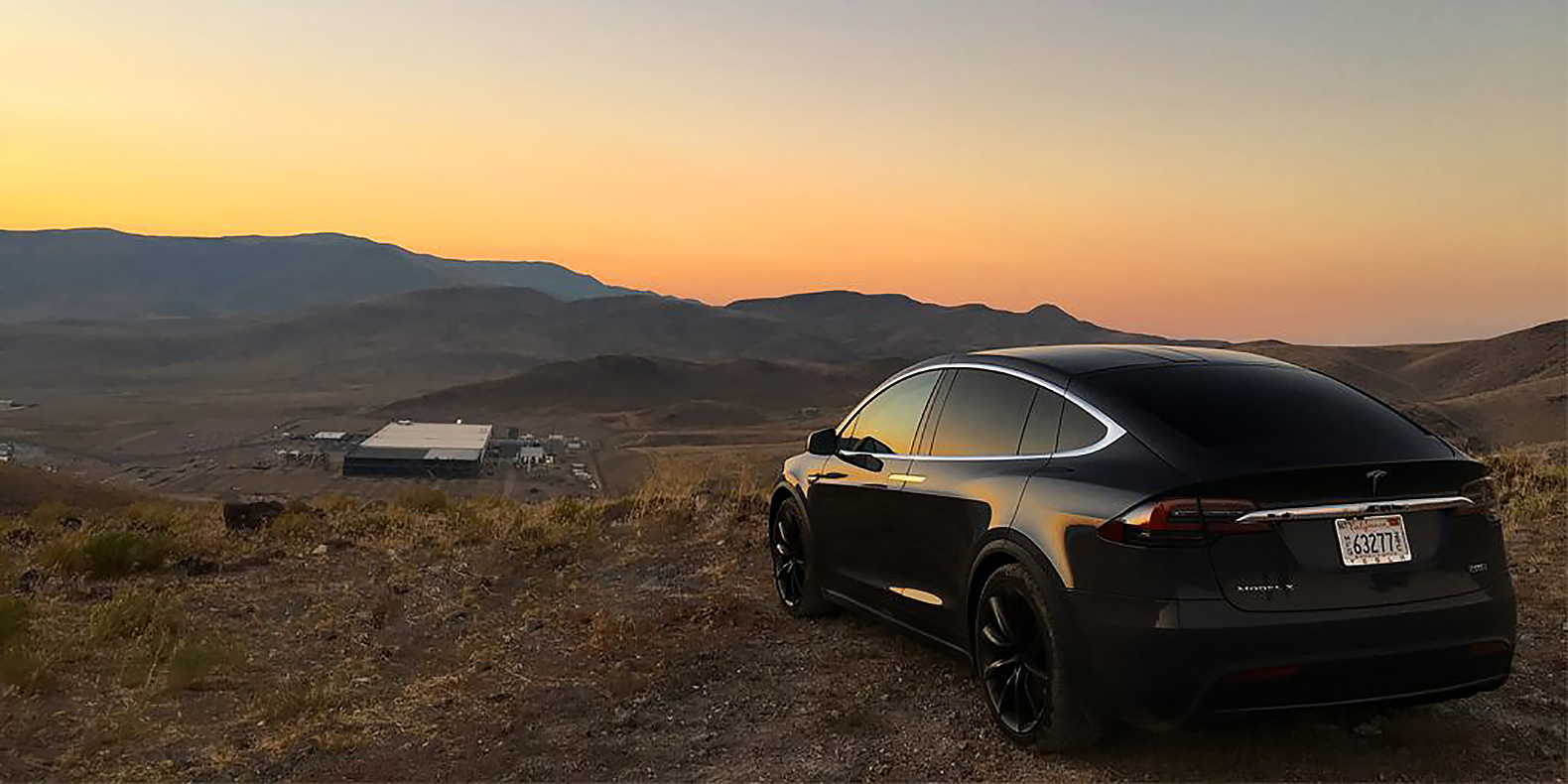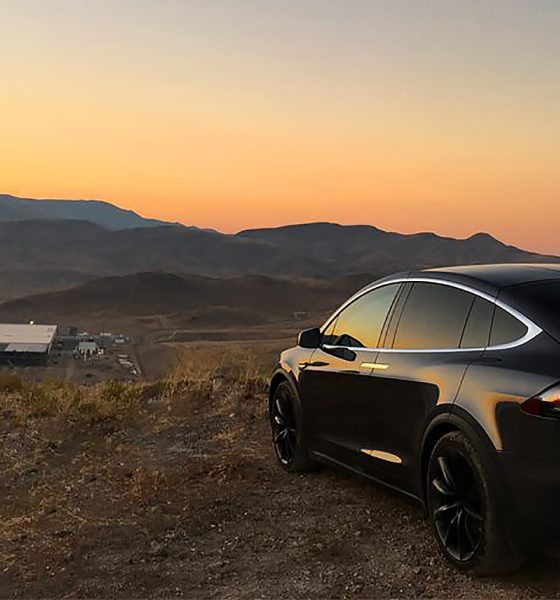

Investor's Corner
Tesla’s $10 ‘bear case’ from Morgan Stanley highlights the noise surrounding TSLA
Tesla stock (NASDAQ:TSLA) looked alarming right before the markets opened on Tuesday amidst news that Morgan Stanley analyst Adam Jonas had lowered the electric car maker’s “bear case outcome” to just $10 per share, a steep drop from his initial worst-case scenario estimate of $97 per share. The analyst’s findings dealt a blow to Tesla stock during pre-market trading, pushing shares down by over 3% at one point.
The Morgan Stanley analyst’s worst-case estimate was driven in part by concerns about Tesla’s business in China, which would likely be adversely affected by the ongoing trade war between the country and the United States. According to Jonas, Tesla could generate about $9 billion in revenues in China between 2020 and 2024, but if Beijing targets the company with reprisal tariffs and restrictions, that figure could be halved, resulting in more than $16 billion of the electric car maker’s market value getting wiped out.
“Our revised case assumes Tesla misses our current Chinese volume forecast by roughly half, to account for the highly volatile trade situation in the region, particularly around areas of technology, which we believe run a high and increasing risk of government/regulatory attention. We believe as Tesla’s share price declines, the likelihood of the company potentially seeking alternatives from strategic/industrial/financial partners rises,” Jonas noted.

The analyst’s radical $10 estimate for Tesla unsurprisingly attracted a lot of attention, and it did not take long before news of Morgan Stanley’s updated views made the rounds online. What was not reported as much was that Adam Jonas kept his $230 price target on TSLA stock, as well as his equal-weight rating for the company under the firm’s best-case scenario. Also left out in a number of reports was Morgan Stanley’s best-case price target of $391, which is actually pretty optimistic considering the recent movements of Tesla stock.
Other personalities in the financial world eventually gave their take on Jonas’ worst-case scenario for Tesla. Jim Cramer, who has traded barbs with Elon Musk in the past, described the $10 estimate as “insane” and a simple gimmick. “Setting a price target of $10 on a $200 stock really is insane. How about $8? How about $12? Ten basically says, ‘I want to get talked about. Let’s talk about me,’” Cramer said, adding that “if he had done $47 would we have talked about him? No, but 10. Ten is right in your face. I question this piece of research.”
Cathie Wood of ARK Invest, who still maintains a positive stance on the company, also questioned the Morgan Stanley analyst’s findings. “Also interesting to note, Jonas cut his worst-case price by more than 90% but left his price target unchanged at $230. So, I guess he is suggesting that the probability of the bear case has dropped significantly, and/ or the probability of the bull case has increased,” Wood wrote on Twitter.

Considering the pervading negativity surrounding Tesla’s narrative today, it is unsurprising to see aspects of Morgan Stanley’s recent note getting misinterpreted. A look at social media platforms such as Twitter, for example, would reveal some Tesla critics stating that the $10 worst-case estimate was Morgan Stanley’s new price target for TSLA stock. This is untrue, but these instances all but highlight how easy it is for misconceptions about the electric car maker could spread.
This pervading negativity is seen in the mainstream coverage of the company. On Monday, Dan Ives from Wedbush Securities cut his price target and penned a scathing note to Tesla, even describing Elon Musk’s initiatives such as Full Self-Driving and the Robotaxi network as “sci-fi projects.” Ives’ statements on Monday garnered widespread attention, significantly more than his comments on Tuesday, when he explained that he does not think Tesla will eventually file for bankruptcy. Ives also noted on Tuesday that Tesla could return to profitability in the future, provided that demand is sustained and costs are cut.
At this point, it appears that the time is right for Tesla to adopt a more assertive PR strategy that is ready to debunk misinformation and clarify misconceptions at a moment’s notice. By doing so, Tesla can lay out its case clearly, providing explanations as necessary and leaving little to speculation. This would require constant vigilance on the part of the electric car maker, but it would help, at least by straightening out the facts of a story. These initiatives, coupled with an aggressive information campaign that dispels misconceptions about the company and its vehicles, could ultimately allow Tesla to change the course of its narrative for the better.
As of writing, Tesla stock is trading -0.29% at $204.76 per share.
Disclosure: I have no ownership in shares of TSLA and have no plans to initiate any positions within 72 hours.

Investor's Corner
Tesla stock closes at all-time high on heels of Robotaxi progress

Tesla stock (NASDAQ: TSLA) closed at an all-time high on Tuesday, jumping over 3 percent during the day and finishing at $489.88.
The price beats the previous record close, which was $479.86.
Shares have had a crazy year, dipping more than 40 percent from the start of the year. The stock then started to recover once again around late April, when its price started to climb back up from the low $200 level.
This week, Tesla started to climb toward its highest levels ever, as it was revealed on Sunday that the company was testing driverless Robotaxis in Austin. The spike in value pushed the company’s valuation to $1.63 trillion.
Tesla Robotaxi goes driverless as Musk confirms Safety Monitor removal testing
It is the seventh-most valuable company on the market currently, trailing Nvidia, Apple, Alphabet (Google), Microsoft, Amazon, and Meta.
Shares closed up $14.57 today, up over 3 percent.
The stock has gone through a lot this year, as previously mentioned. Shares tumbled in Q1 due to CEO Elon Musk’s involvement with the Department of Government Efficiency (DOGE), which pulled his attention away from his companies and left a major overhang on their valuations.
However, things started to rebound halfway through the year, and as the government started to phase out the $7,500 tax credit, demand spiked as consumers tried to take advantage of it.
Q3 deliveries were the highest in company history, and Tesla responded to the loss of the tax credit with the launch of the Model 3 and Model Y Standard.
Additionally, analysts have announced high expectations this week for the company on Wall Street as Robotaxi continues to be the focus. With autonomy within Tesla’s sights, things are moving in the direction of Robotaxi being a major catalyst for growth on the Street in the coming year.
Elon Musk
Tesla needs to come through on this one Robotaxi metric, analyst says
“We think the key focus from here will be how fast Tesla can scale driverless operations (including if Tesla’s approach to software/hardware allows it to scale significantly faster than competitors, as the company has argued), and on profitability.”

Tesla needs to come through on this one Robotaxi metric, Mark Delaney of Goldman Sachs says.
Tesla is in the process of rolling out its Robotaxi platform to areas outside of Austin and the California Bay Area. It has plans to launch in five additional cities, including Houston, Dallas, Miami, Las Vegas, and Phoenix.
However, the company’s expansion is not what the focus needs to be, according to Delaney. It’s the speed of deployment.
The analyst said:
“We think the key focus from here will be how fast Tesla can scale driverless operations (including if Tesla’s approach to software/hardware allows it to scale significantly faster than competitors, as the company has argued), and on profitability.”
Profitability will come as the Robotaxi fleet expands. Making that money will be dependent on when Tesla can initiate rides in more areas, giving more customers access to the program.
There are some additional things that the company needs to make happen ahead of the major Robotaxi expansion, one of those things is launching driverless rides in Austin, the first city in which it launched the program.
This week, Tesla started testing driverless Robotaxi rides in Austin, as two different Model Y units were spotted with no occupants, a huge step in the company’s plans for the ride-sharing platform.
Tesla Robotaxi goes driverless as Musk confirms Safety Monitor removal testing
CEO Elon Musk has been hoping to remove Safety Monitors from Robotaxis in Austin for several months, first mentioning the plan to have them out by the end of 2025 in September. He confirmed on Sunday that Tesla had officially removed vehicle occupants and started testing truly unsupervised rides.
Although Safety Monitors in Austin have been sitting in the passenger’s seat, they have still had the ability to override things in case of an emergency. After all, the ultimate goal was safety and avoiding any accidents or injuries.
Goldman Sachs reiterated its ‘Neutral’ rating and its $400 price target. Delaney said, “Tesla is making progress with its autonomous technology,” and recent developments make it evident that this is true.
Investor's Corner
Tesla gets bold Robotaxi prediction from Wall Street firm
Last week, Andrew Percoco took over Tesla analysis for Morgan Stanley from Adam Jonas, who covered the stock for years. Percoco seems to be less optimistic and bullish on Tesla shares, while still being fair and balanced in his analysis.

Tesla (NASDAQ: TSLA) received a bold Robotaxi prediction from Morgan Stanley, which anticipates a dramatic increase in the size of the company’s autonomous ride-hailing suite in the coming years.
Last week, Andrew Percoco took over Tesla analysis for Morgan Stanley from Adam Jonas, who covered the stock for years. Percoco seems to be less optimistic and bullish on Tesla shares, while still being fair and balanced in his analysis.
Percoco dug into the Robotaxi fleet and its expansion in the coming years in his latest note, released on Tuesday. The firm expects Tesla to increase the Robotaxi fleet size to 1,000 vehicles in 2026. However, that’s small-scale compared to what they expect from Tesla in a decade.
Tesla expands Robotaxi app access once again, this time on a global scale
By 2035, Morgan Stanley believes there will be one million Robotaxis on the road across multiple cities, a major jump and a considerable fleet size. We assume this means the fleet of vehicles Tesla will operate internally, and not including passenger-owned vehicles that could be added through software updates.
He also listed three specific catalysts that investors should pay attention to, as these will represent the company being on track to achieve its Robotaxi dreams:
- Opening Robotaxi to the public without a Safety Monitor. Timing is unclear, but it appears that Tesla is getting closer by the day.
- Improvement in safety metrics without the Safety Monitor. Tesla’s ability to improve its safety metrics as it scales miles driven without the Safety Monitor is imperative as it looks to scale in new states and cities in 2026.
- Cybercab start of production, targeted for April 2026. Tesla’s Cybercab is a purpose-built vehicle (no steering wheel or pedals, only two seats) that is expected to be produced through its state-of-the-art unboxed manufacturing process, offering further cost reductions and thus accelerating adoption over time.
Robotaxi stands to be one of Tesla’s most significant revenue contributors, especially as the company plans to continue expanding its ride-hailing service across the world in the coming years.
Its current deployment strategy is controlled and conservative to avoid any drastic and potentially program-ruining incidents.
So far, the program, which is active in Austin and the California Bay Area, has been widely successful.








